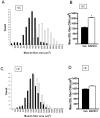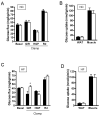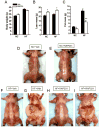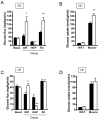The effects of a soluble activin type IIB receptor on obesity and insulin sensitivity
- PMID: 19668253
- PMCID: PMC2783781
- DOI: 10.1038/ijo.2009.162
The effects of a soluble activin type IIB receptor on obesity and insulin sensitivity
Abstract
Background: Myostatin, also known as Growth and Differentiation Factor 8, is a secreted protein that inhibits muscle growth. Disruption of myostatin signaling increases muscle mass and decreases glucose, but it is unclear whether these changes are related. We treated mice on chow and high-fat diets with a soluble activin receptor type IIB (ActRIIB, RAP-031), which is a putative endogenous signaling receptor for myostatin and other ligands of the TGF-beta superfamily.
Results: After 4 weeks, RAP-031 increased lean and muscle mass, grip strength and contractile force. RAP-031 enhanced the ability of insulin to suppress glucose production under clamp conditions in high-fat fed mice, but did not significantly change insulin-mediated glucose disposal. The hepatic insulin-sensitizing effect of RAP-031 treatment was associated with increased adiponectin levels. RAP-031 treatment for 10 weeks further increased muscle mass and drastically reduced fat content in mice on either chow or high-fat diet. RAP-031 suppressed hepatic glucose production and increased peripheral glucose uptake in chow-fed mice. In contrast, RAP-031 suppressed glucose production with no apparent change in glucose disposal in high-fat-diet mice.
Conclusion: Our findings show that disruption of ActRIIB signaling is a viable pharmacological approach for treating obesity and diabetes.
Conflict of interest statement
Figures






References
-
- McPherron AC, Lawler AM, Lee SJ. Regulation of skeletal muscle mass in mice by a new TGF-beta superfamily member. Nature. 1997;387:83–90. - PubMed
-
- Schuelke M, Wagner KR, Stolz LE, Hubner C, Riebel T, Komen W, et al. Myostatin mutation associated with gross muscle hypertrophy in a child. N Engl J Med. 2004;350:2682–2688. - PubMed
-
- Bogdanovich S, Krag TO, Barton ER, Morris LD, Whittemore LA, Ahima RS, et al. Functional improvement of dystrophic muscle by myostatin blockade. Nature. 2002;420:418–421. - PubMed
Publication types
MeSH terms
Substances
Grants and funding
LinkOut - more resources
Full Text Sources
Other Literature Sources
Medical

